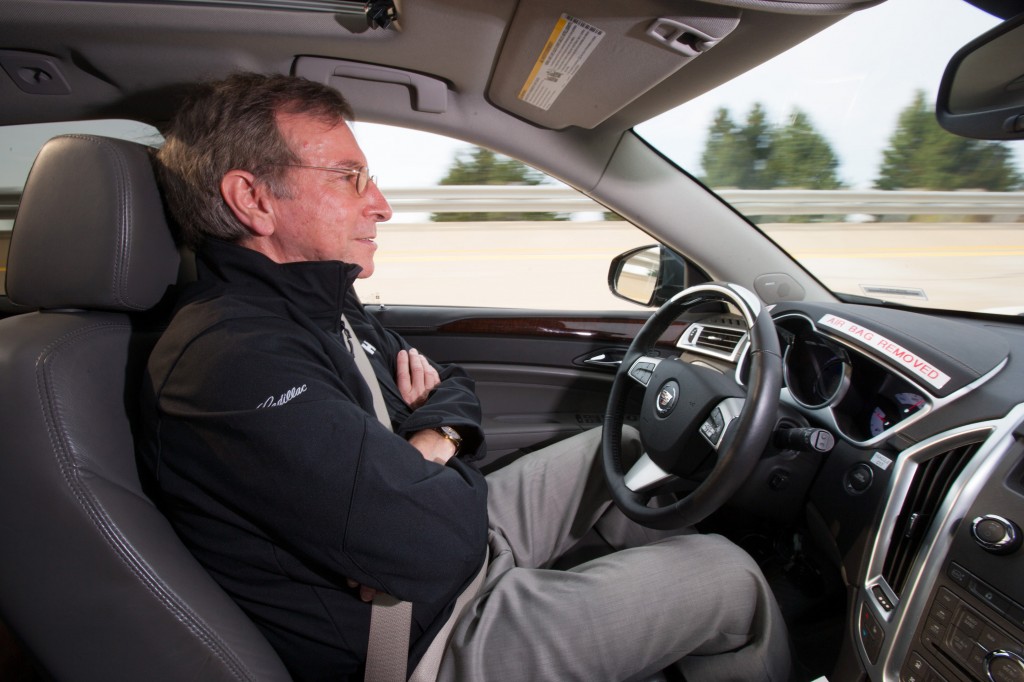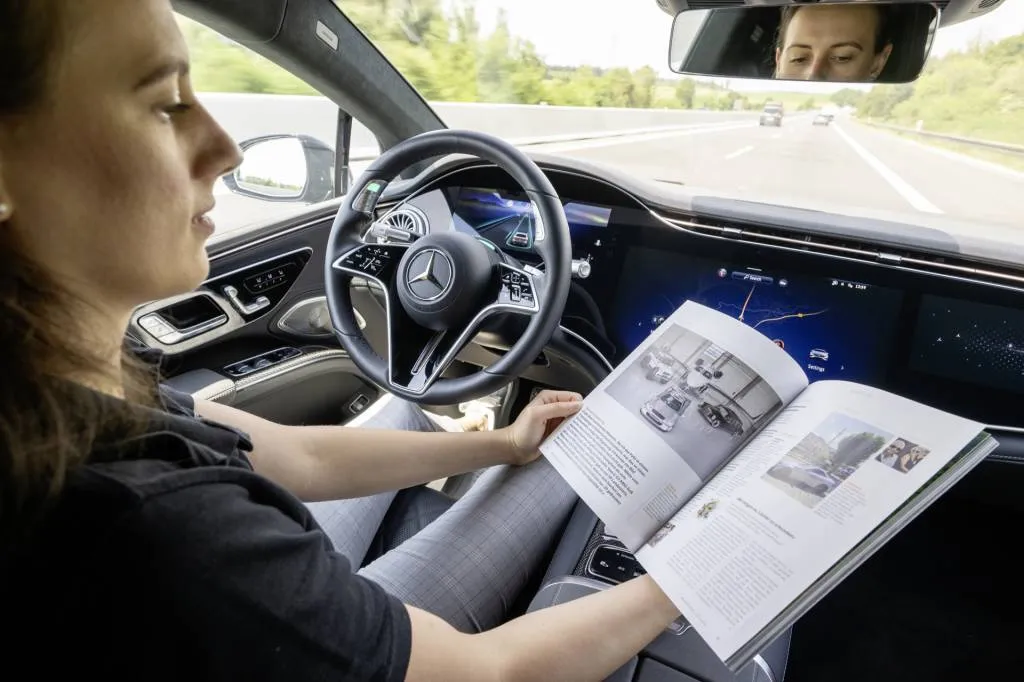- There aren’t any self-driving automobiles on the market within the U.S.
- Pilot exams of self-driving automobiles proceed to broaden, to different autos and in different cities
- Most new automobiles might be outfitted with Stage 2 driver-assist options on the SAE’s self-driving scale of Stage 0 to Stage 5
Perhaps you have seen them: An electrical automobile topped with a hat of roving cameras, sensors, and lidar. Perhaps you have ridden in them, in choose cities comparable to San Francisco, Phoenix, and Los Angeles: a driverless taxi obeying the foundations of the street however unable but to go on the freeway.
Google’s Waymo continues to broaden, in each cities and automobile varieties. It is evolving from the Jaguar I-Tempo crossover and Chrysler Pacifica minivan into choices starting from the Hyundai Ioniq 5 to Zeekr, the EV model owned by Chinese language conglomerate Geely. Waymo can also be increasing not simply into Austin, Texas, and tiptoeing into different U.S. cities, it is moving into Tokyo, Japan.
Like most evolutionary applied sciences, nevertheless, far more is promised than delivered. Tesla claims it should have a two-door robotaxi due “earlier than 2027,” however that appears extremely unlikely. In December 2024, GM killed its Cruise robotaxi challenge after dumping $10 billion within the startup it acquired in 2016.
To be clear, there aren’t any self-driving automobiles you should purchase immediately. But automakers proceed to develop hands-free driving methods that supply a point of autonomy. That was one advantage of GM’s funding in Cruise. Up to now, GM’s Tremendous Cruise ranks highest among the many handful of hands-free driving methods out there on restricted highways within the U.S.
What’s the distinction between self-driving automobiles, hands-free autonomous methods, and all of the goofy names automakers slap on their superior driver-assist methods? We’re glad we requested.
Whereas the degrees of semi-autonomous driving sophistication can fluctuate considerably from one model to a different, the outlined bounds of these ranges are comparatively set.
In 2014, the Society of Automotive Engineers (SAE) adopted a typical taxonomy for self-driving automobiles that outlined six ranges—from Stage 0 to Stage 5—of automated driving. The boundaries are fairly apparent. Stage 0 was no help and Stage 5 was absolutely autonomous. The SAE up to date their tiers in 2021, and whereas Stage 5 stays absolutely autonomous, Stage 0 has modified to incorporate some lively security options which have grow to be commonplace if not normal in the previous couple of years, comparable to computerized emergency braking.
Enjoyable truth: Do you know that the primary autonomous driving characteristic debuted in 1958? The 1958 Chrysler Imperial was the primary automobile to have cruise management, initially dubbed “Auto-Pilot.” Tesla co-opted it greater than a half-century later, and it is nonetheless a misnomer, as is the EV model’s Full Self-Driving.
That is why it is necessary for automobile buyers, automakers, and their sellers and advertising and marketing departments acknowledge the six distinct ranges as put forth by the SAE. The massive bounce comes from Stage 2 to Stage 3, and automakers comparable to BMW, Mercedes-Benz, GM, and even Honda prepared their autos for Stage 3 tech.
Stage 0: No self-driving features in any respect. Drivers are chargeable for controlling steering, throttle, and braking. They’re additionally chargeable for monitoring every little thing across the automobile. Stage 0 contains options that present warnings and short-term help, together with computerized emergency braking, blind-spot screens, and lane-departure warnings. The overwhelming majority of automobiles on the street immediately fall into this class.
SAE ranges of driving automation, from none to totally self-driving
Stage 1: Some driver help is allowed. In automobiles outfitted with Stage 1 automation, the automobile can take management of the steering or the throttle/brake in sure conditions, nevertheless it depends on the driving force to instantly take over if these methods fail. Many more moderen automobiles are outfitted with adaptive cruise management that may gradual the automobile to a cease, which falls into this class. Some automobiles are outfitted with lively lane management (often known as lane-departure prevention) methods that permit for restricted durations of hands-off driving.

Cadillac’s Tremendous Cruise system present process testing.
Stage 2: Extra driver help. Stage 2 automation differs from Stage 1 in what number of methods are used to help drivers, however the two ranges are equivalent in requiring drivers to instantly take over if these methods fail or cease working. Stage 2 permits for using adaptive cruise management and lively lane management on the identical time. A number of automakers provide methods that can take management of the throttle/brake and steering for a restricted time, however require driver interplay. If the driving force does not take over, these methods cease, normally with a number of warnings to the driving force. A few of immediately’s most subtle methods can deal with all of the controls at full pace on the freeway however nonetheless require the driving force to watch the street forward. One of the best of them is GM’s Tremendous Cruise. Ford’s Bluecruise and Tesla’s Full Self-Driving additionally qualify right here.

Mercedes-Benz Drive Pilot Stage 3 self-driving system
Stage 3: Stage 3 consists of conditional automation. Stage 3 automation can deal with all driving conditions in sure conditions and continuously screens the street, not like Stage 2 automobiles. Stage 3 nonetheless requires a driver to take over in sure conditions, so the automobile should include a steering wheel and fuel and brake pedals. Mercedes-Benz’s Drive Pilot system is taken into account Stage 3 as much as 59 mph, nevertheless it’s allowed solely on choose highways in California and Nevada. Honda has a Stage 3 system operational in Japan, however the model remains to be assessing the way to overcome state-by-state regulatory points within the U.S. BMW and Stellantis have each promised Stage 3 methods for the U.S.
Stage 4: Practically self-driving. Most automakers are concentrating on Stage 4 automation for a number of causes. First, it is more likely to be cheaper as a result of Stage 4 self-driving automobiles might not require driver controls comparable to a steering wheel, throttle, or brake pedals—constructing a automobile with redundant controls for each the driving force and autonomous methods can be pricey and sophisticated. Second, Stage 4 differs from Stage 3 primarily as a result of it does not require human intervention if self-driving methods fail, as within the Waymo automobiles.
Stage 5: Absolutely self-driving. This may increasingly seem to be a logical small step from Stage 4, however for many automakers, Stage 5 autonomy is a big leap for self-driving automobiles. Stage 5 automobiles can be self-driving, on a regular basis, in all places. Contemplating many of the nation’s roadways aren’t pencil-straight interstates on a sunny day, the ultimate SAE stage would require intensive testing for sensors that may’t but learn street traces in unhealthy climate, low gentle, on filth roads, or numerous different variable circumstances. Though having a steering wheel and pedals would not preclude a automobile from being Stage 5, to realize the designation these controls can be ineffective: Stage 5 automobiles aren’t pushed by people in any circumstance.
—Senior editor Kirk Bell contributed to this report.

